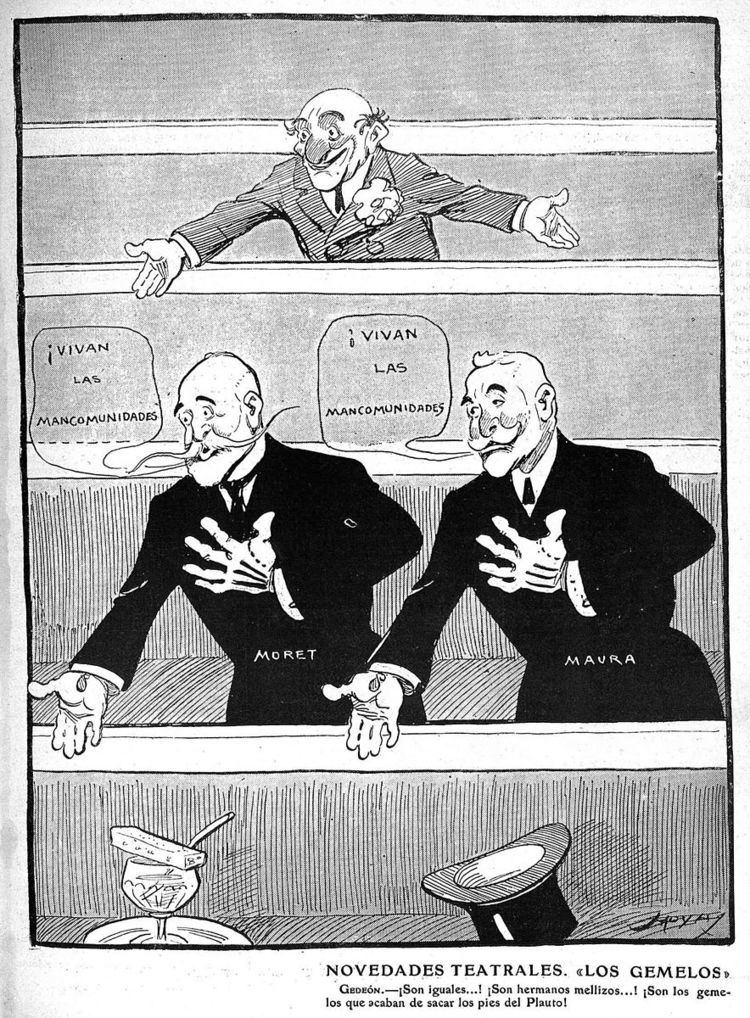 | ||
El Turno Pacífico (or "The Peaceful Turn") was a system put in place by Antonio Cánovas del Castillo whereby the two "official" parties of the Cánovas Restoration, the Partido Conservador (or Liberal-Conservatives of the centre-right) and Partido Liberal (or the Liberals on the centre-left), alternated in power. Its key features were that the government would first be chosen by the king and would then "make" the election (the so-called encasillado), ensuring victory. All this was the product of a plan whereby, after almost a whole century of political instability and many civil wars, the aim of the Restoration was to ensure political stability in Spain.
After a period in office, it would then be the turn of the opposition. The key to the system was the link between the minister of the interior, the provincial civil governors, and the local bosses (caciques). With this system, no sector of the bourgeoisie felt isolated and patronage could be doubled. It worked effectively until 1898 but then became more difficult to operate because of divisions within the major parties and the growing mobilization of sectors of the electorate.
Growing opposition was first apparent, above all in Catalonia, after Spain's defeat in the Spanish–American War. A period of grave instability occurred in 1918 and 1919, but between 1920 and 1923, a serious attempt was made to reconstruct the turno. It was brought to an end by the military coup by General Miguel Primo de Rivera in September 1923.
The Turno Pacifico excluded all other parties from the possibility of victory. This was achieved by electoral fraud: caciques in most constituencies would instruct their clients how to vote. Despite being modelled on the United Kingdom, it lacked a responsiveness to popular opinion as (until about 1914) the outcome was broadly decided in advance.
